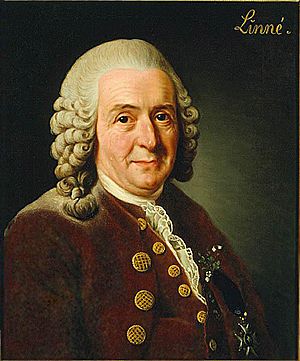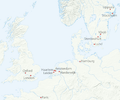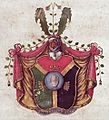Carl Linnaeus facts for kids
Quick facts for kids
Carl Linnaeus
|
|
|---|---|

Carl von Linné, Alexander Roslin, 1775
(oil on canvas, Gripsholm Castle) |
|
| Born | 23 May 1707 Råshult, Stenbrohult parish (now within Älmhult Municipality), Sweden
|
| Died | 10 January 1778 (aged 70) Hammarby (estate), Danmark parish (outside Uppsala), Sweden
|
| Resting place | Uppsala Cathedral |
| Nationality | Swedish |
| Alma mater |
|
| Known for | |
| Spouse(s) |
Sara Elisabeth Moraea
(m. 1739) |
| Children | 7 |
| Scientific career | |
| Fields |
|
| Institutions | Uppsala University |
| Thesis | Dissertatio medica inauguralis in qua exhibetur hypothesis nova de febrium intermittentium causa (1735) |
| Notable students | Peter Ascanius |
| Author abbrev. (botany) | L. |
| Author abbrev. (zoology) | Linnaeus |
| Signature | |
Carl Linnaeus (born May 23, 1707 – died January 10, 1778) was a Swedish scientist. He was a botanist (someone who studies plants), a doctor, and a zoologist (someone who studies animals).
Linnaeus is famous for creating the system of binomial nomenclature. This system gives every animal and plant a unique name using two Latin words. This way of naming things became popular all over the world. Because of his work, he is known as the "father of modern taxonomy". Taxonomy is the science of classifying living things.
Contents
Biography
Early life and studies
Carl Linnaeus was born in Sweden. His family wanted him to become a priest. However, he was not very good at his schoolwork for that path.
Instead, Carl chose to study botany at college because he loved plants. He first studied at Lund University. There, he worked to improve the university's garden. Later, he moved to another college, Uppsala University, to continue his studies.
Travels and research
In 1733, Linnaeus met Sara Lisa Moraeus. He wanted to marry her. However, Sara's father wanted Linnaeus to earn his medical degree first. He also needed to show he could earn enough money to support a family.
So, in 1735, Linnaeus moved to the Netherlands. He stayed there for three years. During this time, he earned his degree in medicine. He also published his important book about how to classify plants.
After returning to Sweden, he worked as a doctor in Stockholm. On July 23, 1739, Carl Linnaeus married Sara Morea in Stockholm.
Throughout the 1740s, he traveled a lot around Sweden. He went on many field trips to find and name different plants and animals. When he was not traveling, Linnaeus worked on his classification system. He wanted it to work for plants, animals, and even minerals.
The Swedish king, Adolf Fredrik, made Linnaeus a noble in 1757. After this, Linnaeus changed his last name to von Linné. He often signed his name as Carl Linné.
Later years
After becoming a noble, Linnaeus kept teaching and writing. People all over the world knew about his work. He communicated with many different scientists and thinkers.
Linnaeus faced health problems as he got older. He suffered from gout and toothaches. In 1774, he had a stroke which made him weaker. Two years later, he had another stroke, which caused him to lose the use of his right side. He passed away in January 1778. He was buried in Uppsala Cathedral.
Classifying humans
Linnaeus was the first to classify humans as part of the primate group. This was a new idea for many people at the time. He treated humans like any other species he was classifying.
He also tried to group humans based on their physical features. However, his main goal was to create a system for all living things. This system helped scientists understand how different species are related.
Commemoration
Many events have celebrated Linnaeus's birthday. His image has appeared on many Swedish postage stamps and banknotes. There are also many statues of Linnaeus around the world.
The Linnean Society of London gives out the Linnean Medal. This award is for excellent work in botany or zoology. They have given it out every year since 1888.
In 2010, two colleges in Sweden joined together. They became Linnaeus University, named in his honor.
Other things named after Linnaeus include:
- The twinflower genus Linnaea.
- Linnaeosicyos, a type of plant.
- A crater on the Earth's moon called Linné.
- A street in Cambridge, Massachusetts, USA.
- The mineral Linnaeite.
Related pages
Images for kids
-
Detail from the 6th edition of Systema Naturae (1748) describing Anthropomorpha ( = Primates) with a division between Homo and Simia
-
Statue as a university student in Lund
-
Pollination depicted in Praeludia Sponsaliorum Plantarum (1729)
-
Wearing the traditional dress of the Sami people of Lapland, holding the twinflower, later known as Linnaea borealis, that became his personal emblem. Martin Hoffman, 1737.
-
The Hamburg Hydra, from the Thesaurus (1734) of Albertus Seba. Linnaeus identified the hydra specimen as a fake in 1735.
-
Title page of Hortus Cliffortianus (1737). The work was a collaboration between Linnaeus and Georg Dionysius Ehret, financed by George Clifford III, one of the directors of the VOC.
-
House in Uppsala
-
His coat of arms
-
Headstone of him and his son Carl Linnaeus the Younger
-
Carl Peter Thunberg was a VOC physician and an apostle of Linnaeus.
-
Peter Forsskål was among the apostles who met a tragic fate abroad.
-
Apostle Daniel Solander (far left) with Joseph Banks (left, sitting) accompanied James Cook (centre) on his journey to Australia.
-
Linnaeus marble by Léon-Joseph Chavalliaud (1899), outside the Palm House at Sefton Park, Liverpool
-
Table of the Animal Kingdom (Regnum Animale) from the 1st edition of Systema Naturæ (1735)
See also
 In Spanish: Carlos Linneo para niños
In Spanish: Carlos Linneo para niños

























